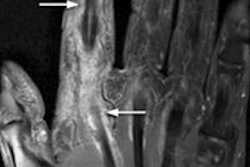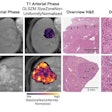Dear MRI Insider,
Summer is vacation time for many of our MRI Insider subscribers. But for the talented people who service MRI systems, this time of year can be a challenge with potentially damaging storms and power interruptions on the way.
These adverse events can disrupt the smooth operation of MRI devices and the normal flow of patient care. How can facilities best prepare for these extraordinary occurrences? Our Insider Exclusive provides helpful advice from people who deal with such issues every day.
The news isn't good for the reimbursement of CT and MRI scans. The proposed 2014 Hospital Outpatient Prospective Payment System includes a slash in payment for the technical component of CT and MRI scans by as much as 38% and 19%, respectively. Radiology advocates are rushing to protest the proposed cuts, which they believe are based on a flawed analysis of the costs involved in delivering imaging services.
In this era of healthcare cost control, is there a better way to use MRI for patients with headache? Researchers at the Mallinckrodt Institute of Radiology say they have found a protocol that eliminates MRI sequences that are potentially unnecessary for diagnosis.
And in other news, a half dose of the MRI contrast agent gadobenate dimeglumine provides just as much relevant diagnostic information as a full dose in 3-tesla imaging of patients with early rheumatoid arthritis, researchers from the Medical University of Vienna and Vienna General Hospital concluded.
Finally, the Stanford Center for Cognitive and Neurobiological Imaging is using art to help make MRI scans a much more pleasant experience. Inspired by scans of her own brain, California artist Laura Jacobson recently created a permanent collection of works of ceramic sculptures, etchings, and acrylic paintings to reflect various aspects of brain imaging.
Be sure to visit the MRI Digital Community on a daily basis to keep in touch with the latest news and novel research studies.


.fFmgij6Hin.png?auto=compress%2Cformat&fit=crop&h=100&q=70&w=100)





.fFmgij6Hin.png?auto=compress%2Cformat&fit=crop&h=167&q=70&w=250)











